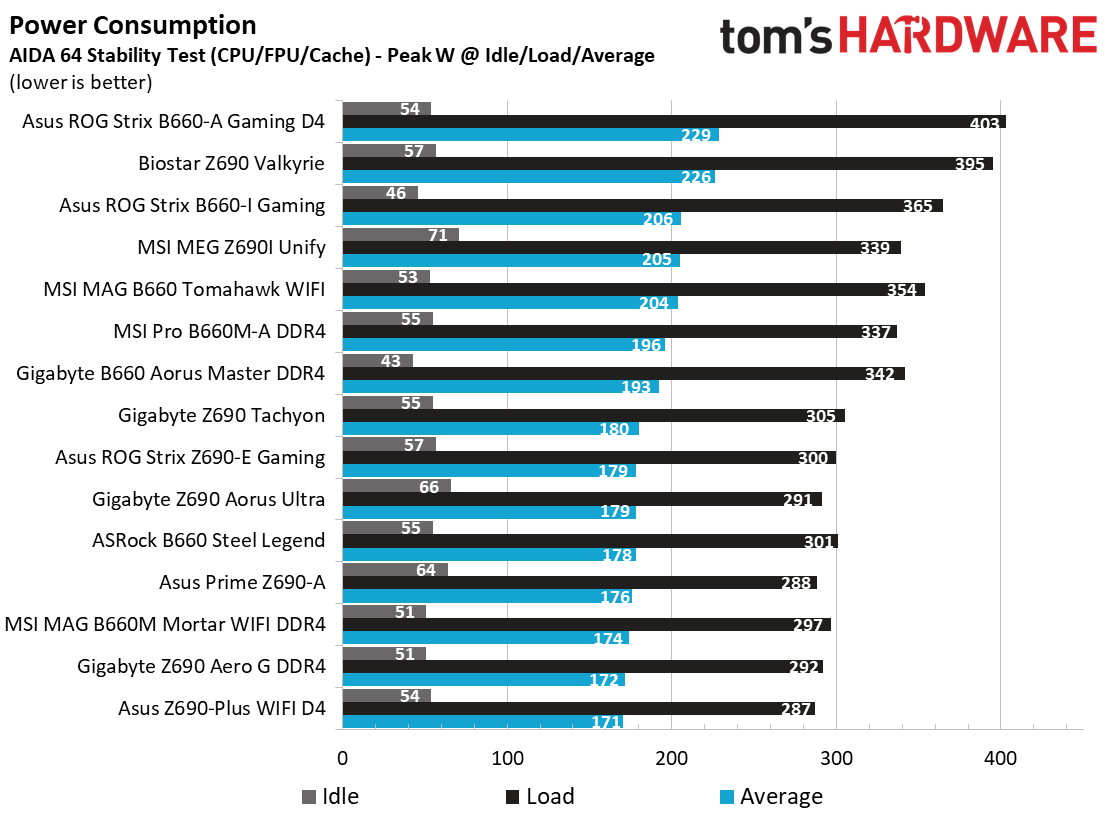Why you can trust Tom's Hardware
Our standard benchmarks and power tests are performed using the CPU’s stock frequencies (including any default boost/turbo), with all power-saving features enabled. We set optimized defaults in the BIOS and the memory by enabling the XMP profile. For this baseline testing, the Windows power scheme is set to balanced (default), so the PC idles appropriately.
To get the most out of the Intel Alder Lake chips, you need to be on Windows 11 with its updated scheduler. In most cases, Windows 10 performs well. However, some tests (Cinebench R20, Corona and POVRay) take a significant hit. In short, if you’re going with Alder Lake, you must upgrade to Windows 11 for the best results across the board. That may change with patching and updates in the future, though.
Synthetic Benchmarks
Synthetics provide a great way to determine how a board runs, as identical settings should produce similar performance results. Turbo boost wattage and advanced memory timings are places where motherboard makers can still optimize for either stability or performance, though, and those settings can impact some testing.
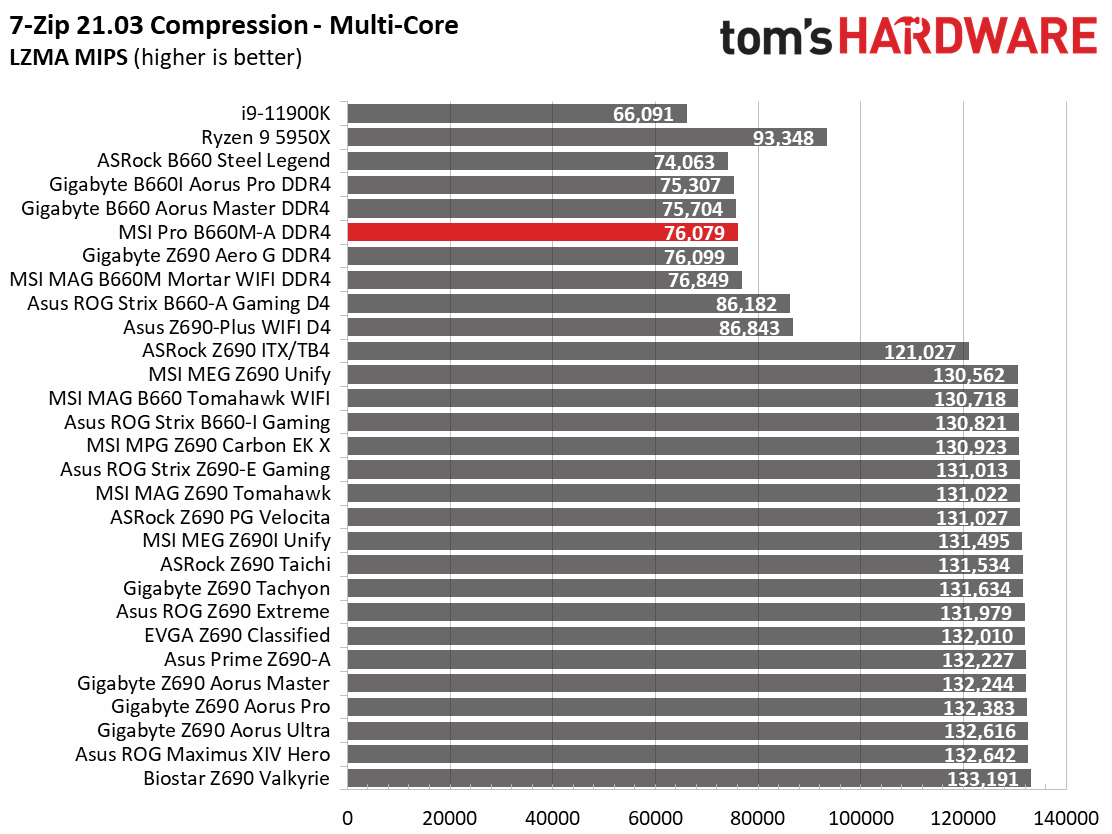
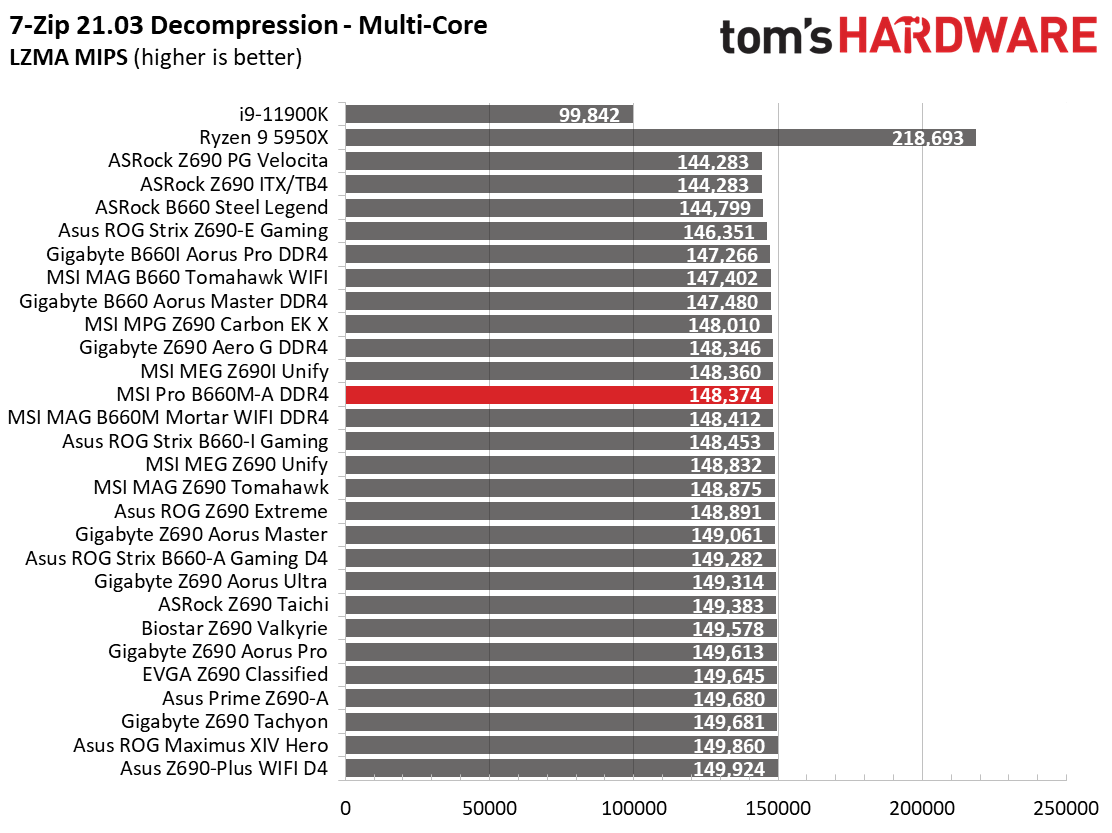
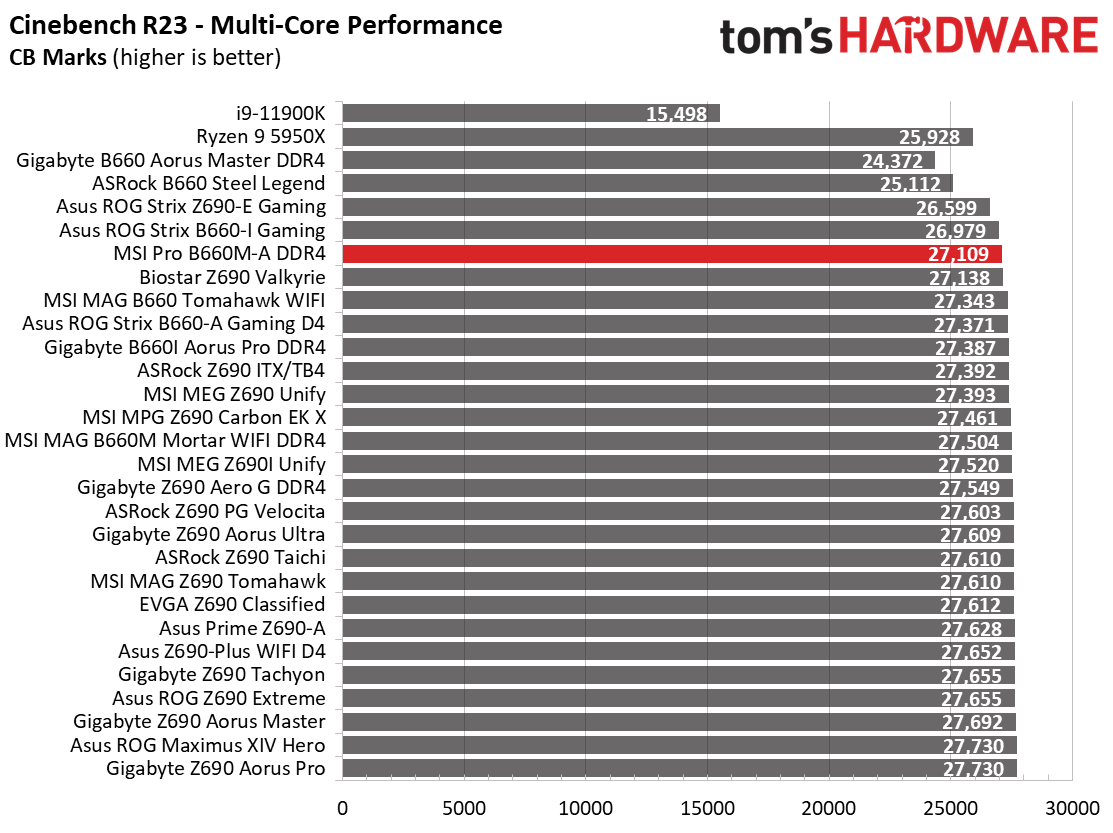
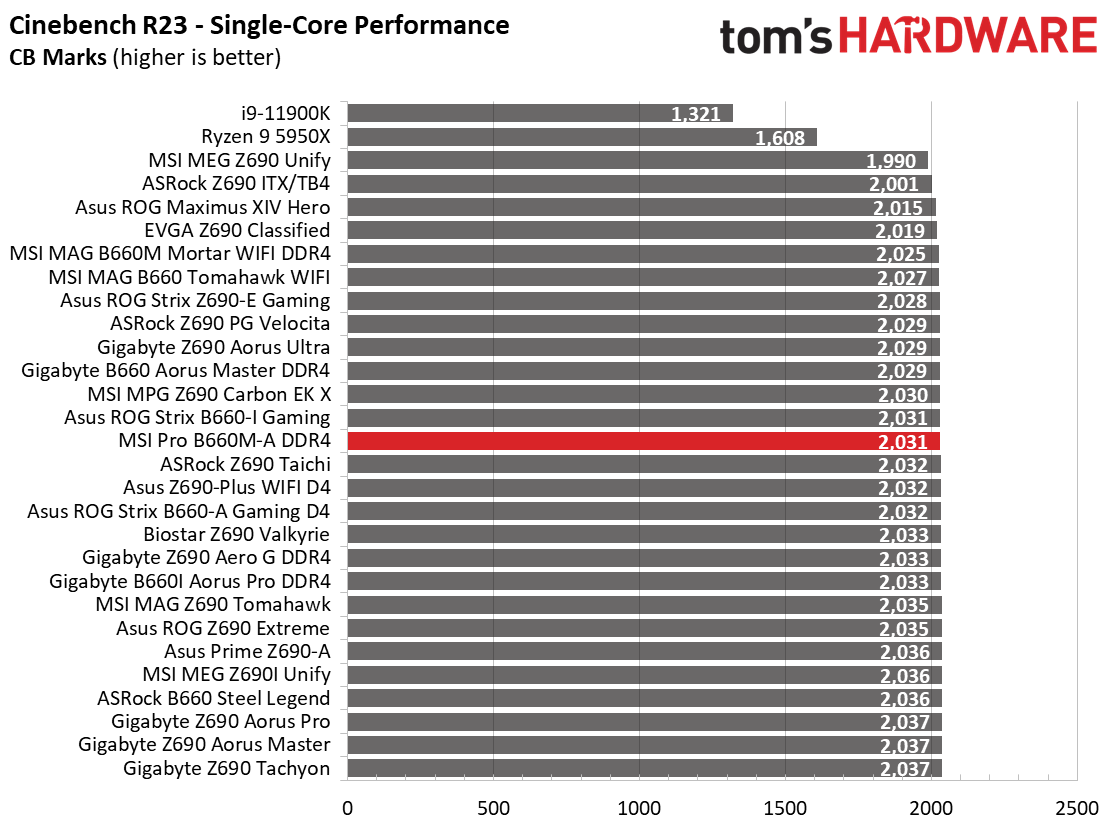
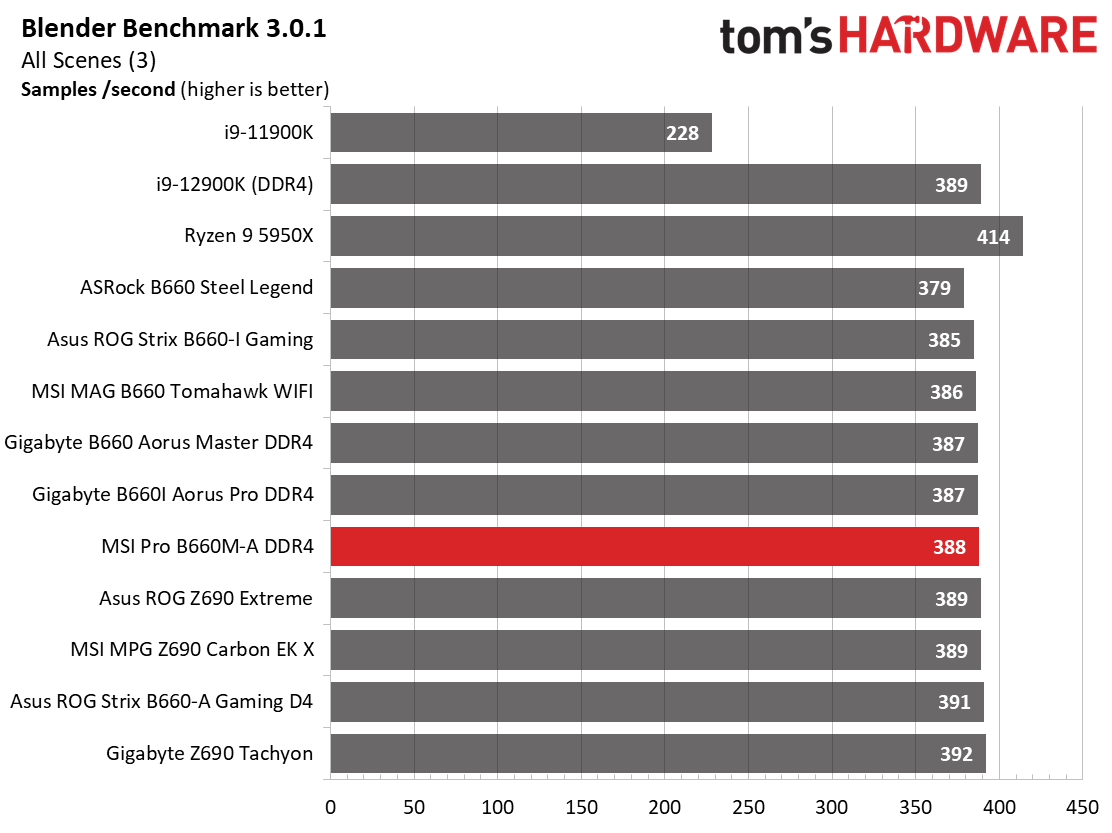
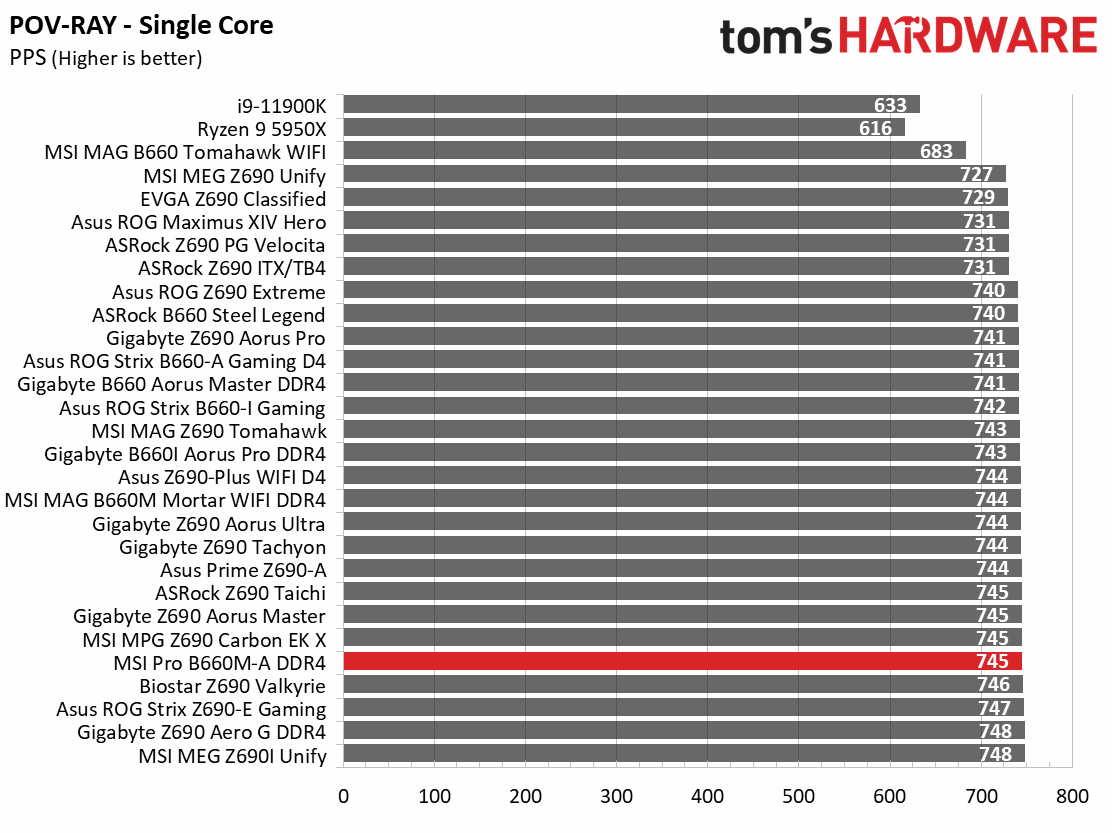
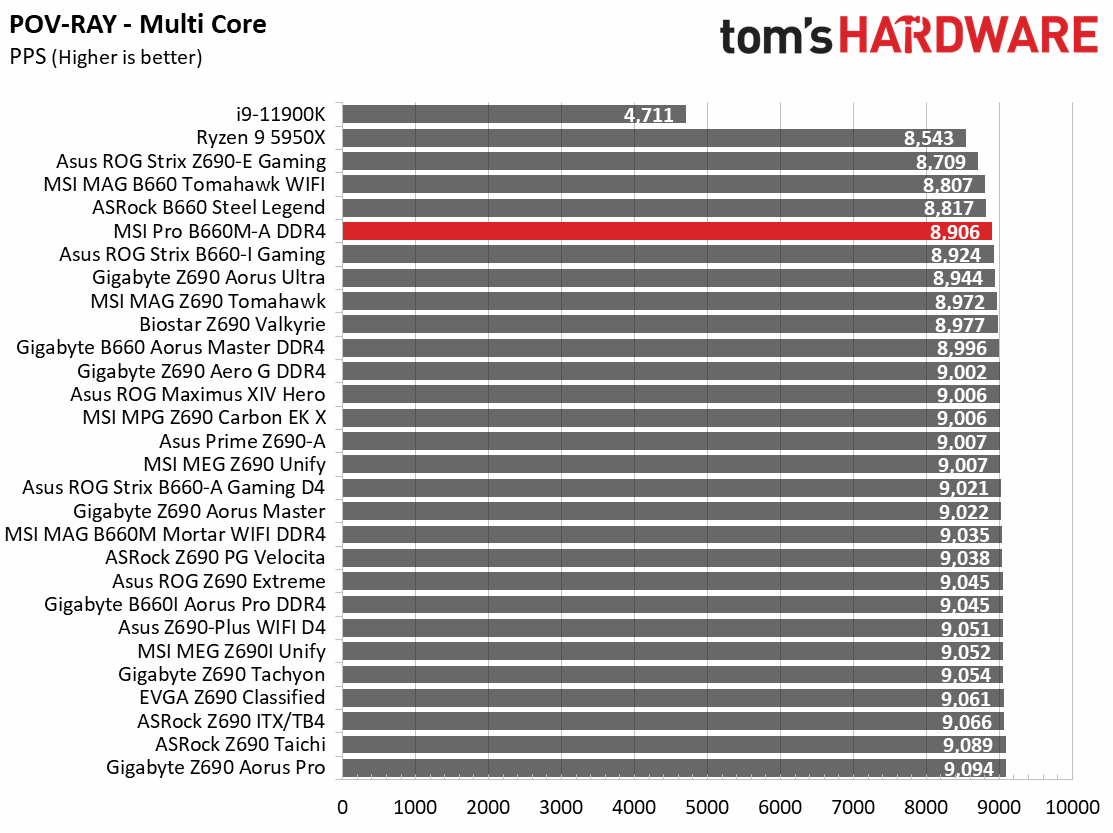
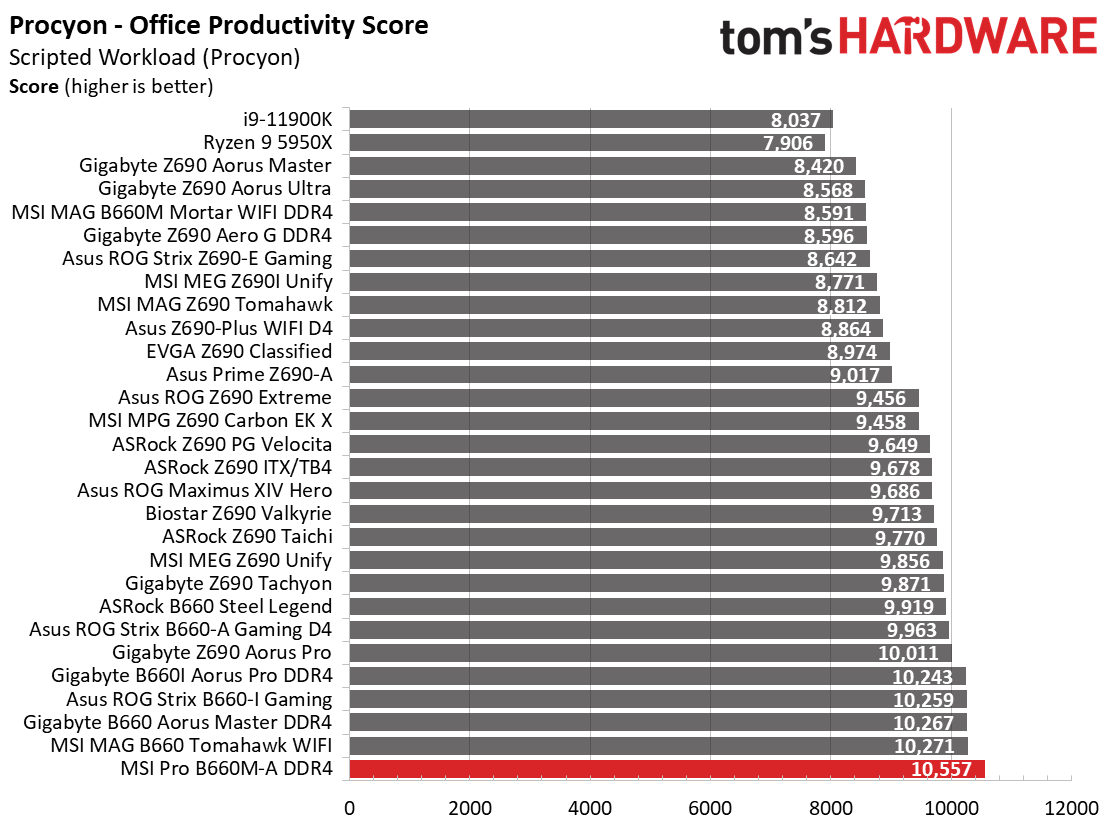
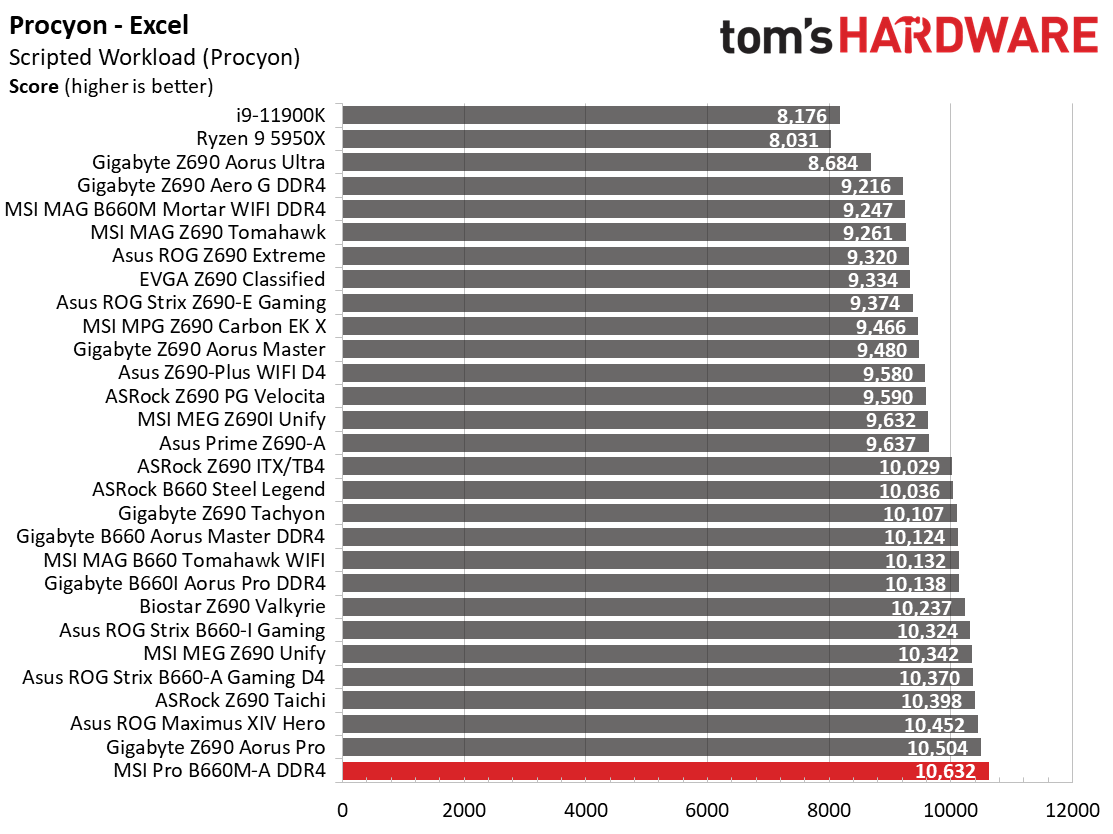
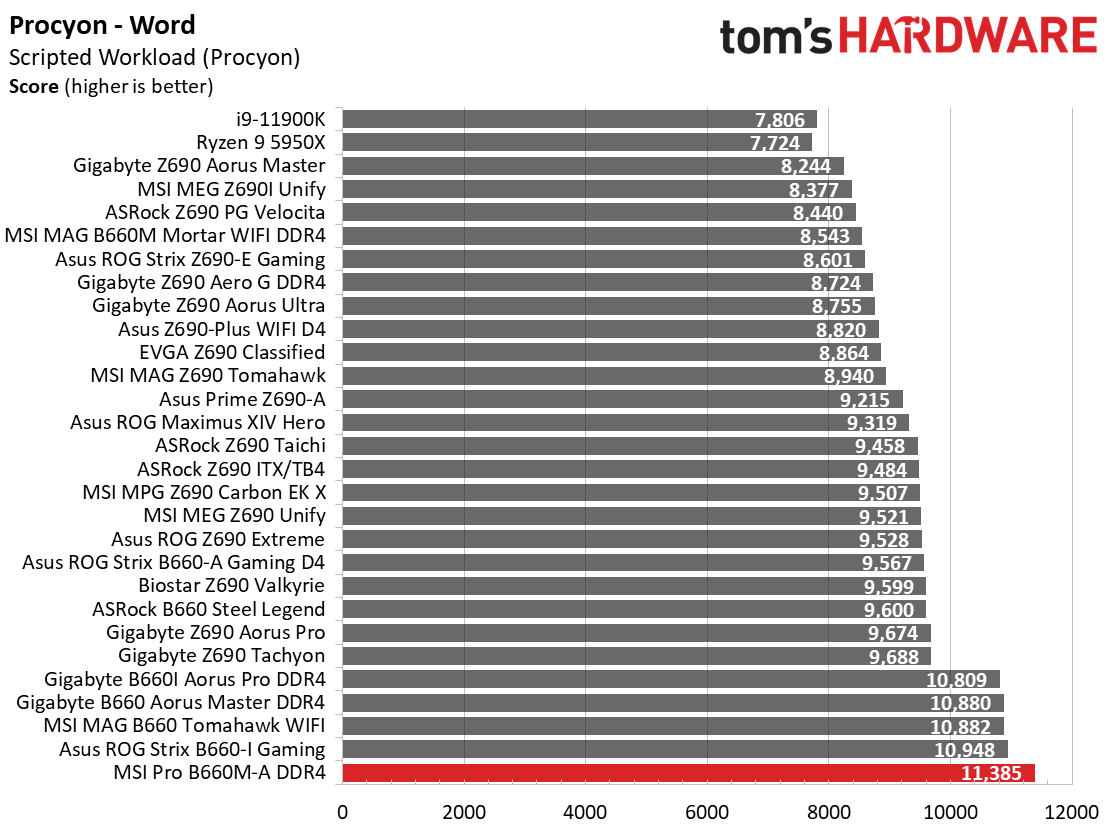
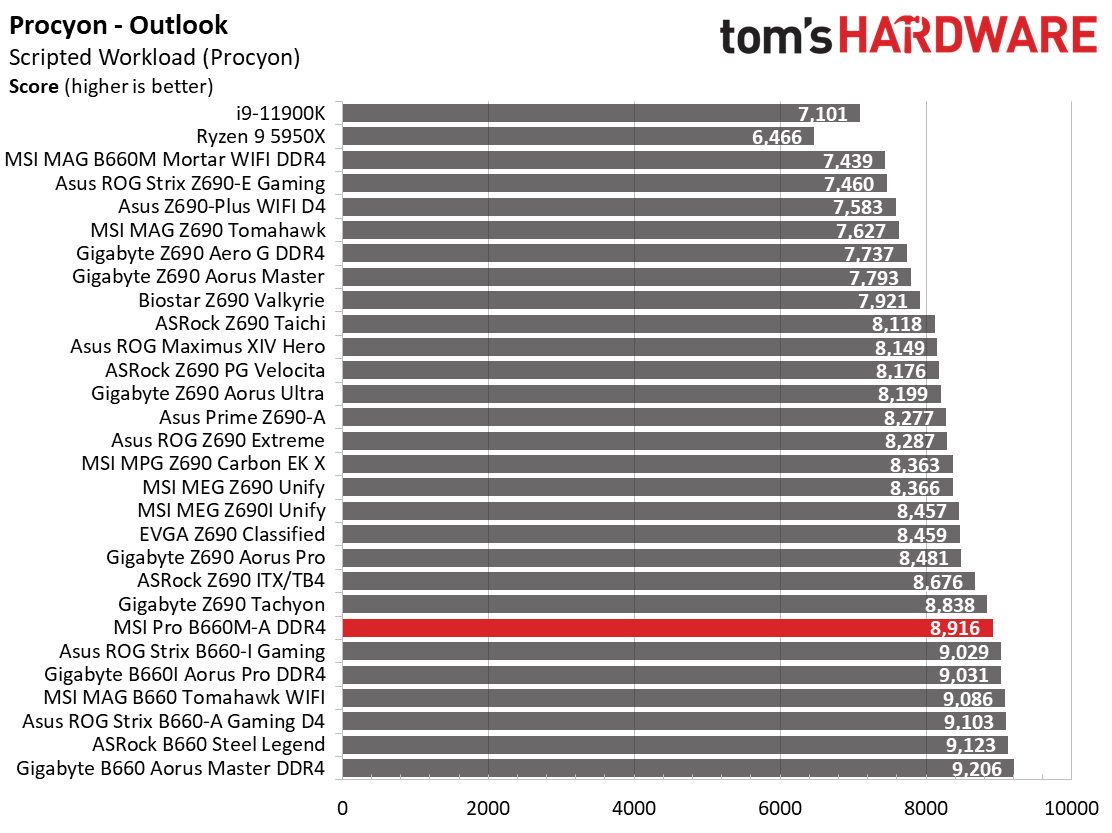
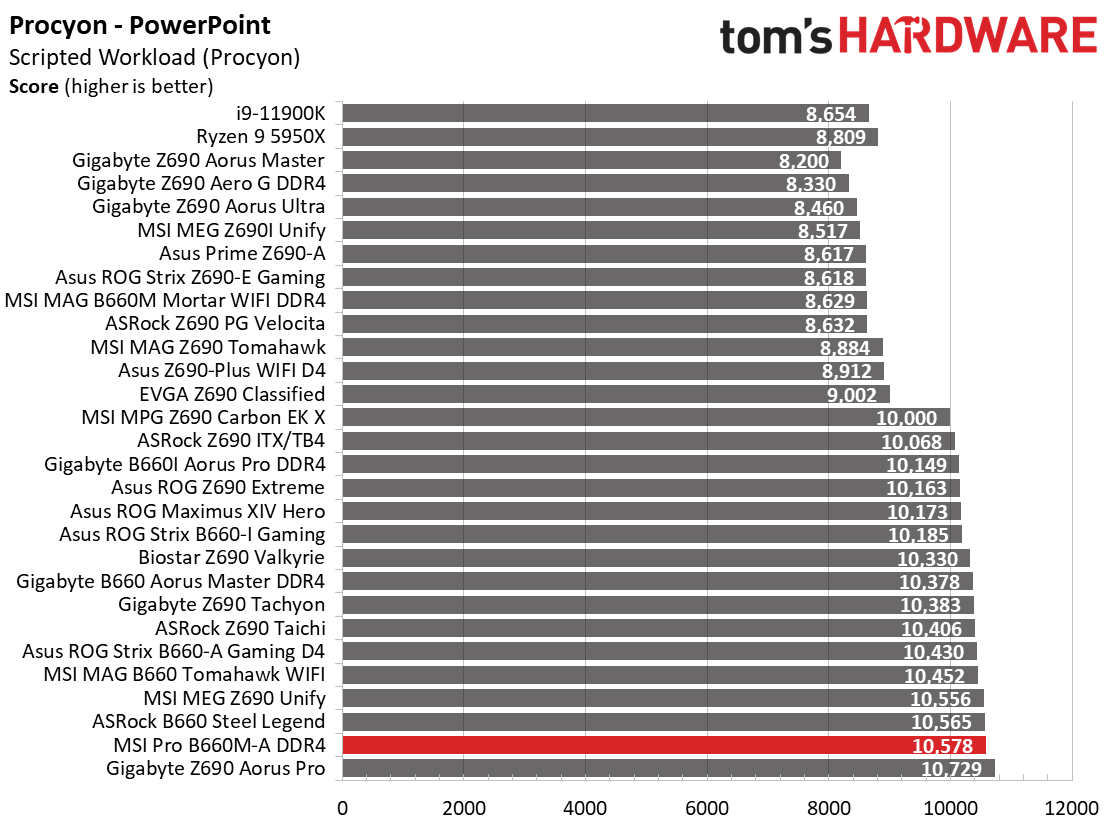
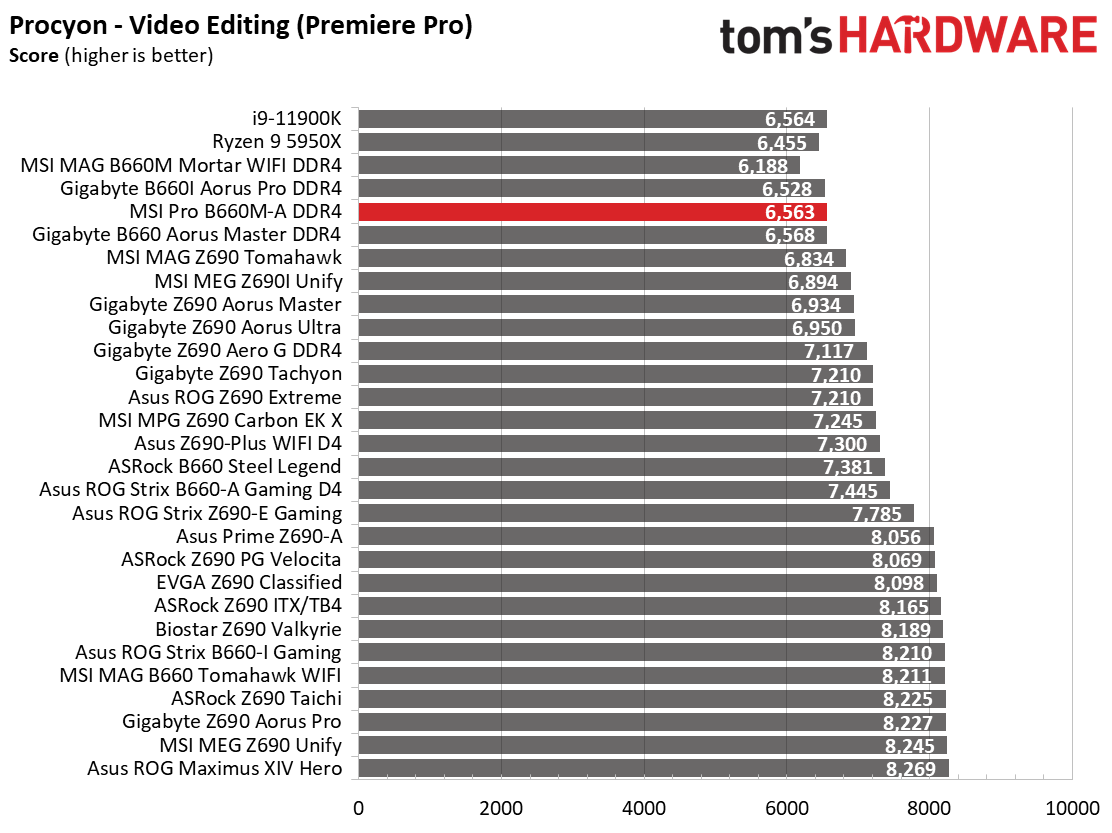
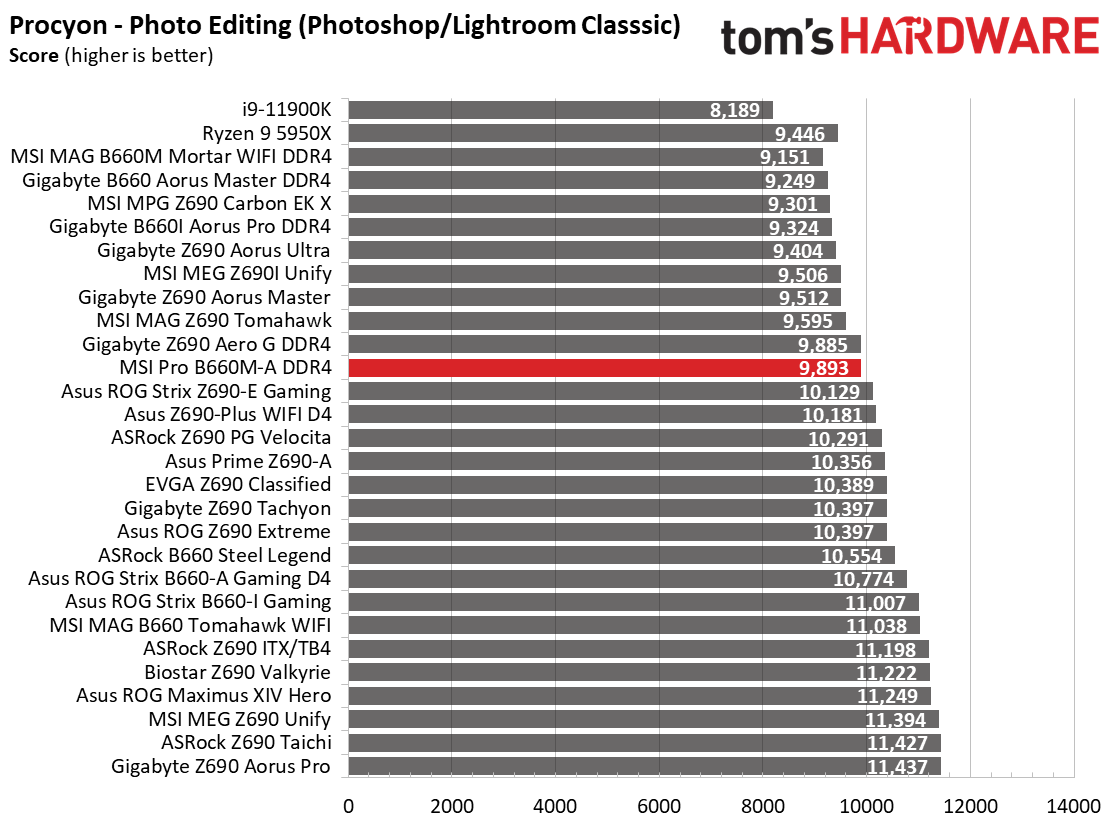
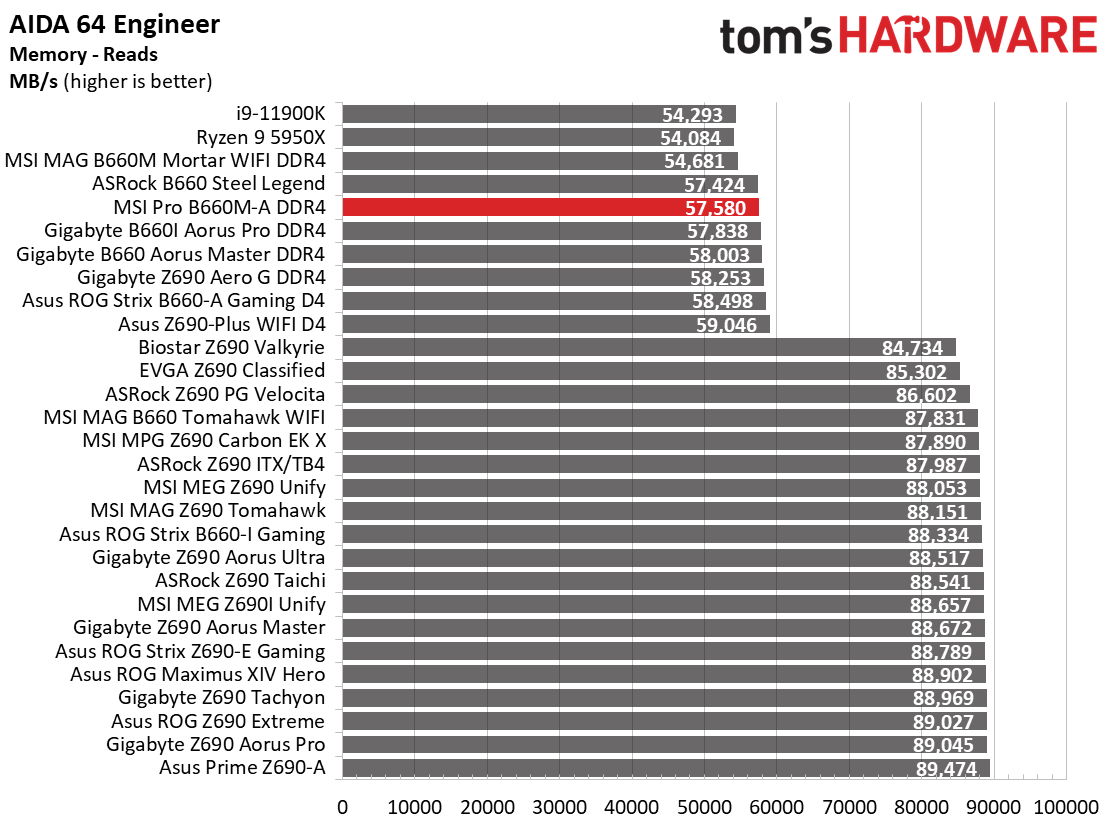
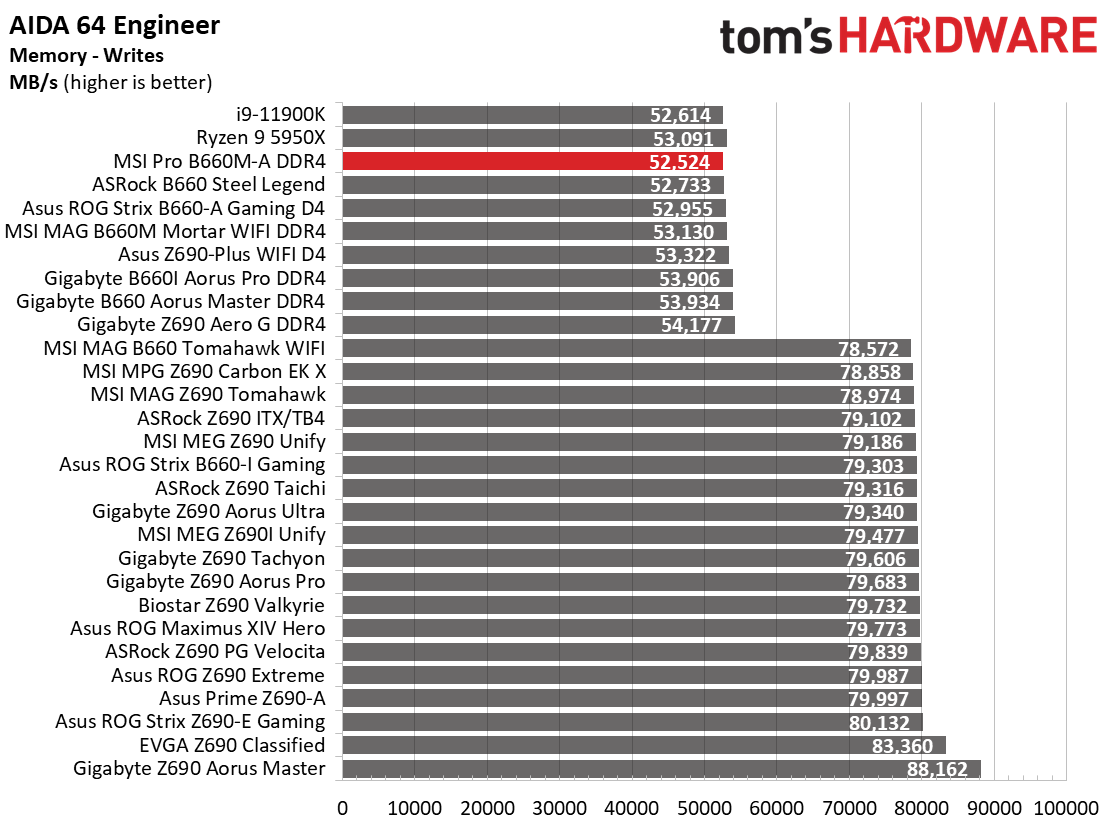
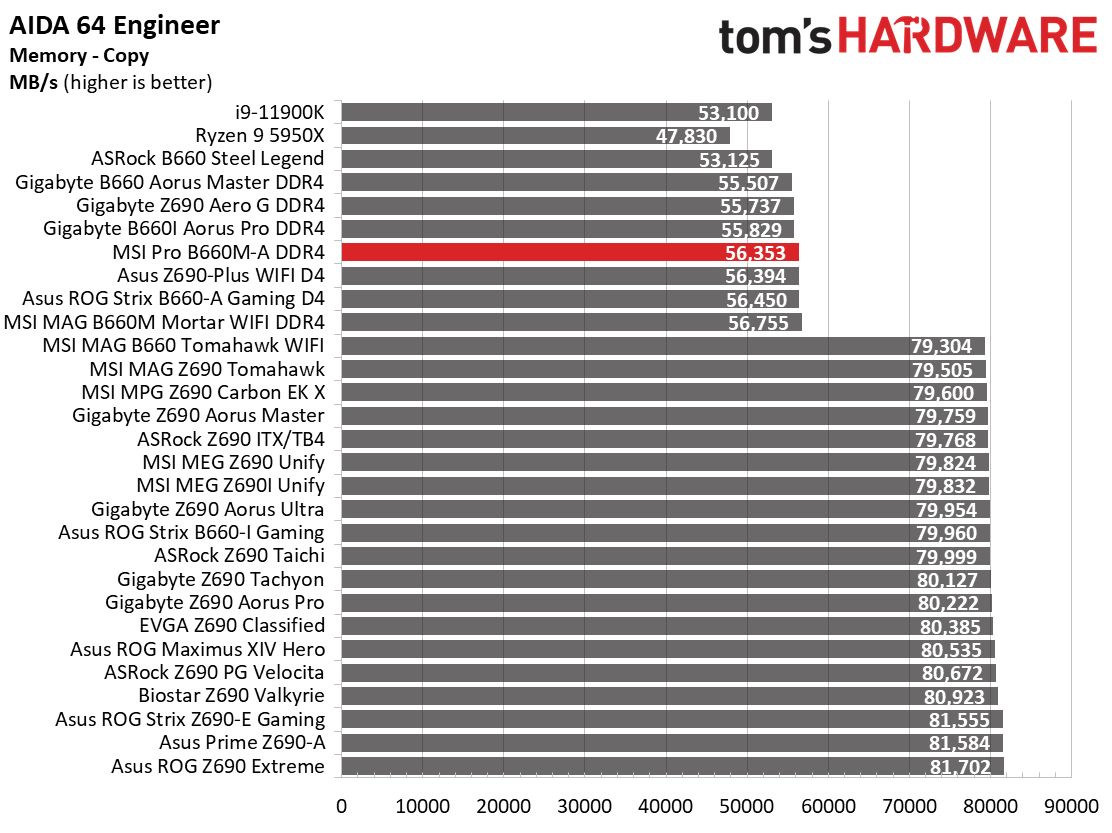
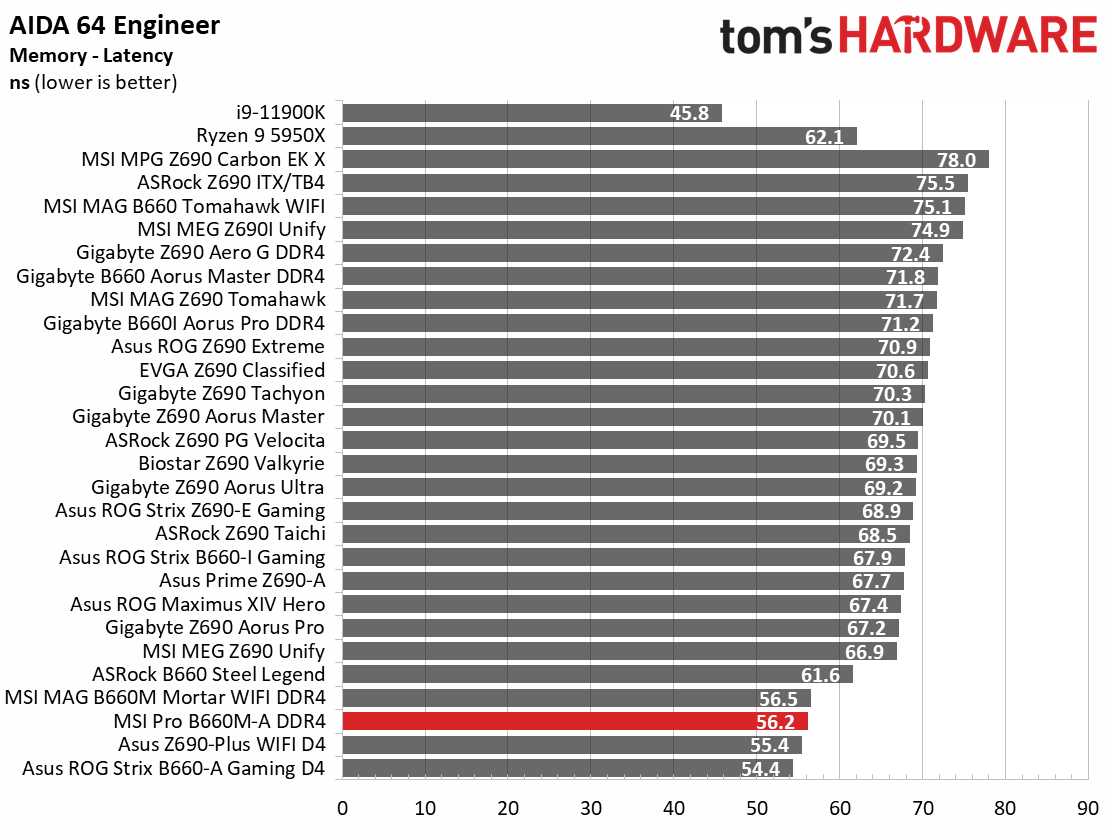
Our Pro B660M-A DDR4 proved itself as a competent performer across most of our tests. We saw great results in the Procyon Office tests and across most single-threaded benchmarks. However, when it came to longer-running multi-threaded benchmarks, the board yielded some slower-than-average results for DDR4 boards, but this was mostly due to the thermal throttling of the CPU. You can lower the stock voltage to make sure it doesn’t throttle.
Timed Applications
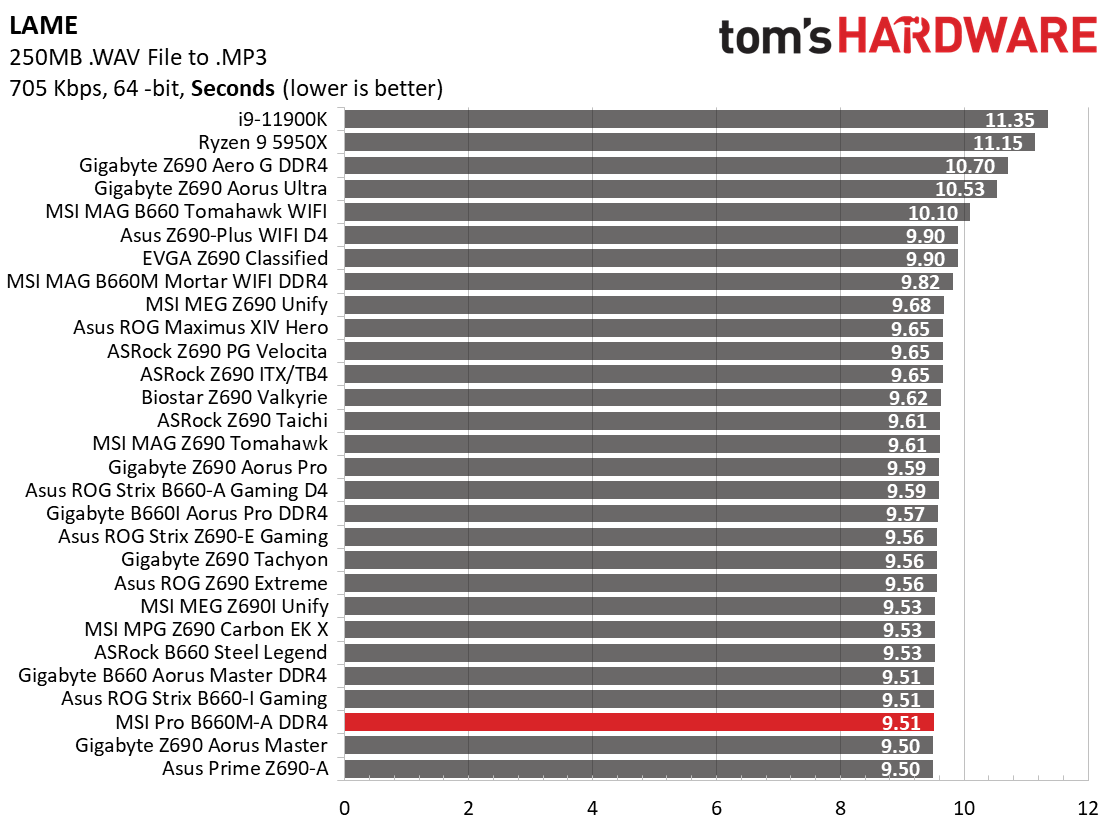
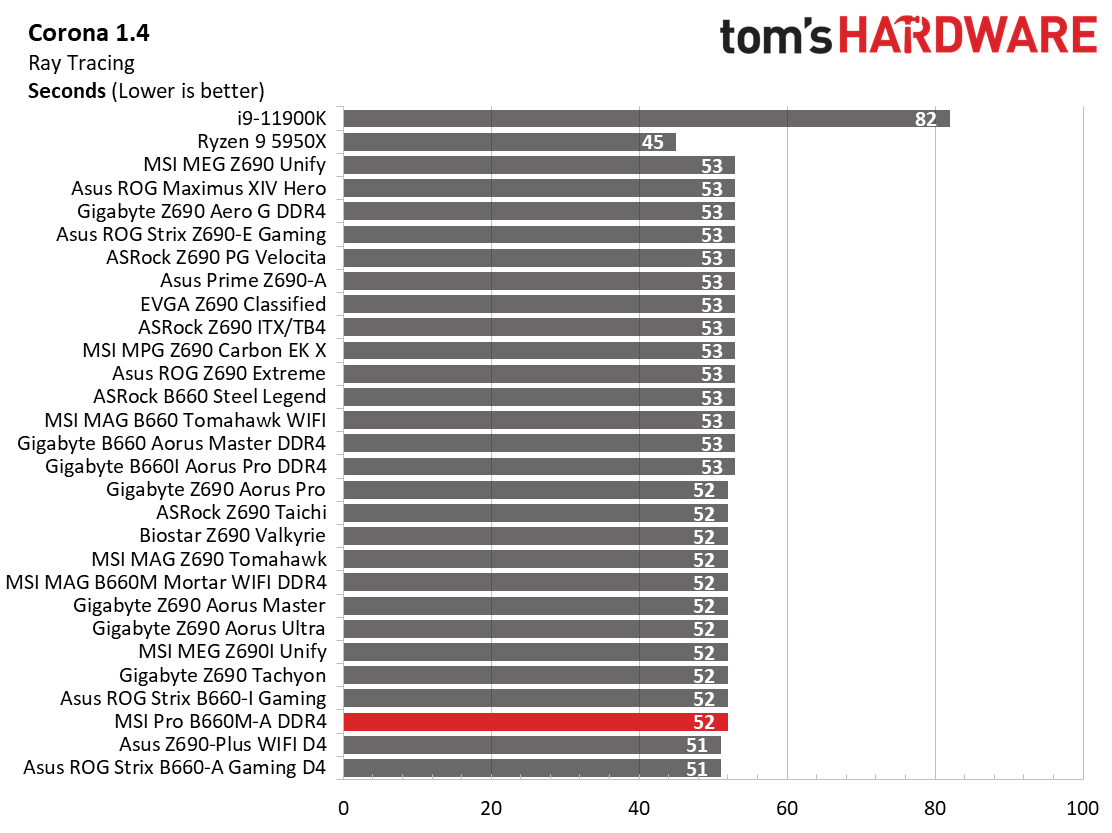
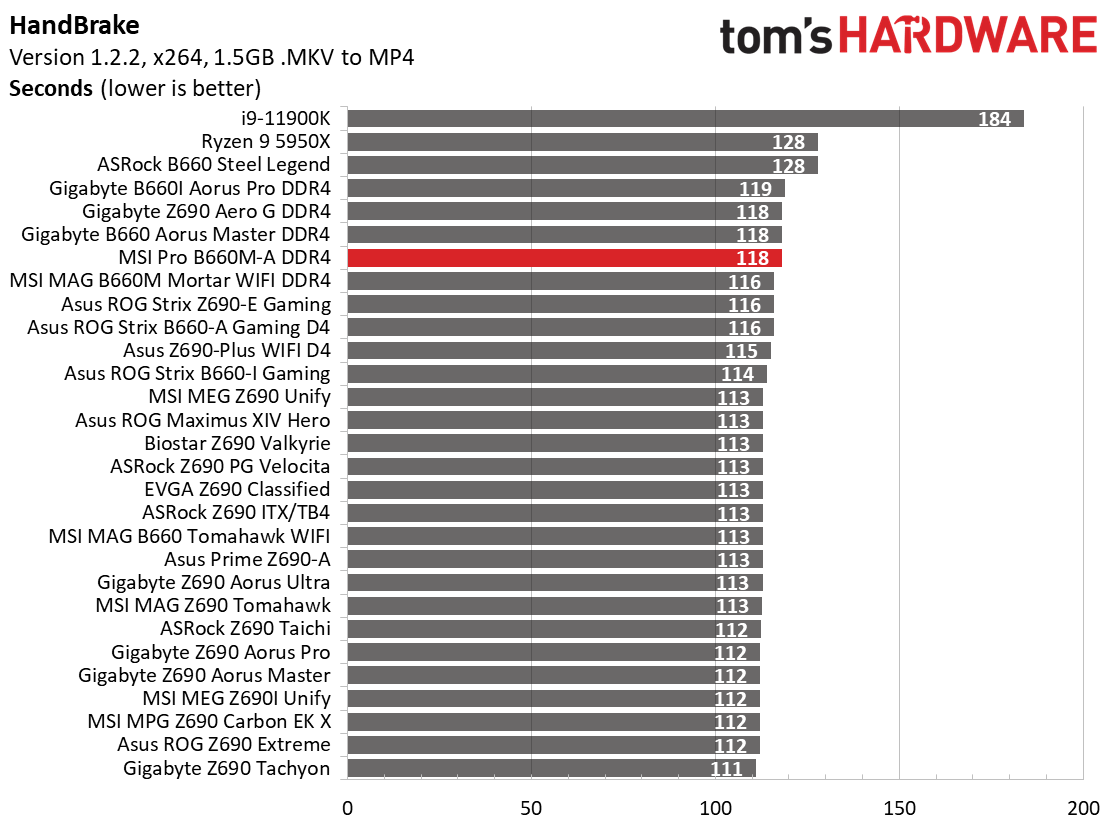
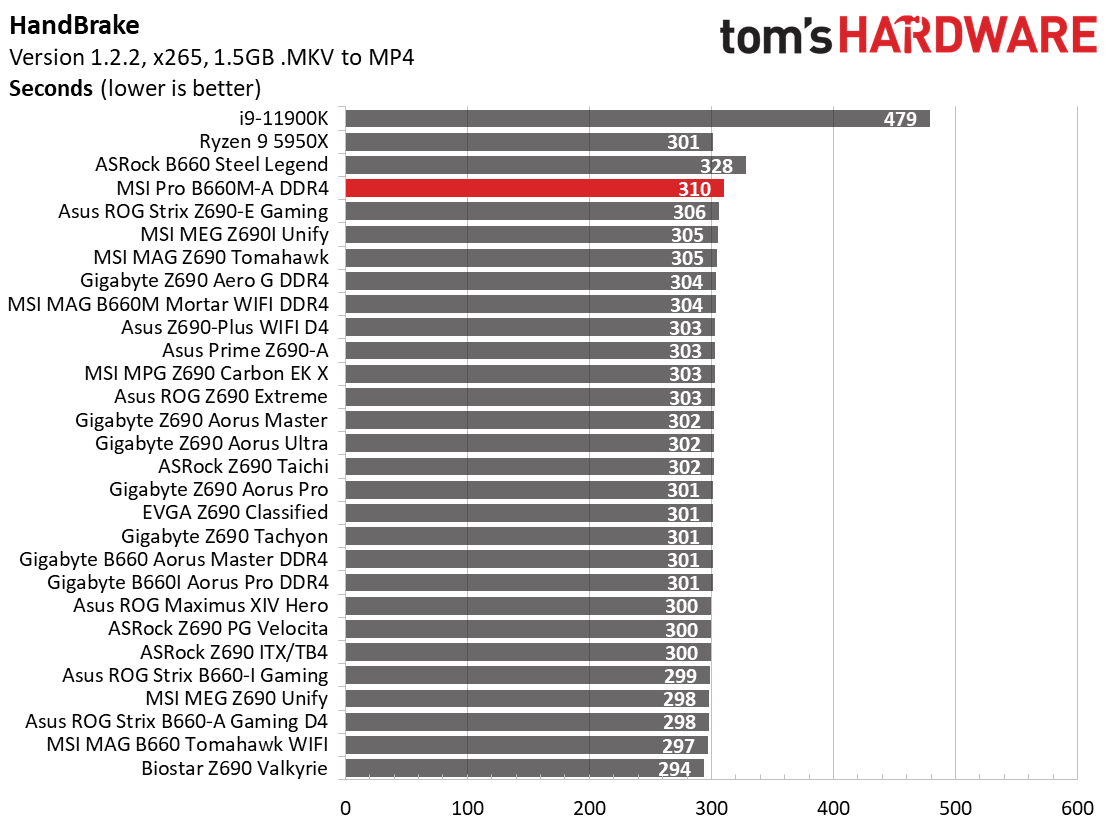
The Pro B660M-A DDR4 displayed good results in LAME (9.51 seconds, one of the faster results) and was average in Corona (52 seconds). The results in Handbrake were average among DDR4 boards in the x264 tests, but slower than most DDR4 boards in the x264 tests. Again it’s a tale of which test where it falls on the performance scale.
3D Games and 3DMark
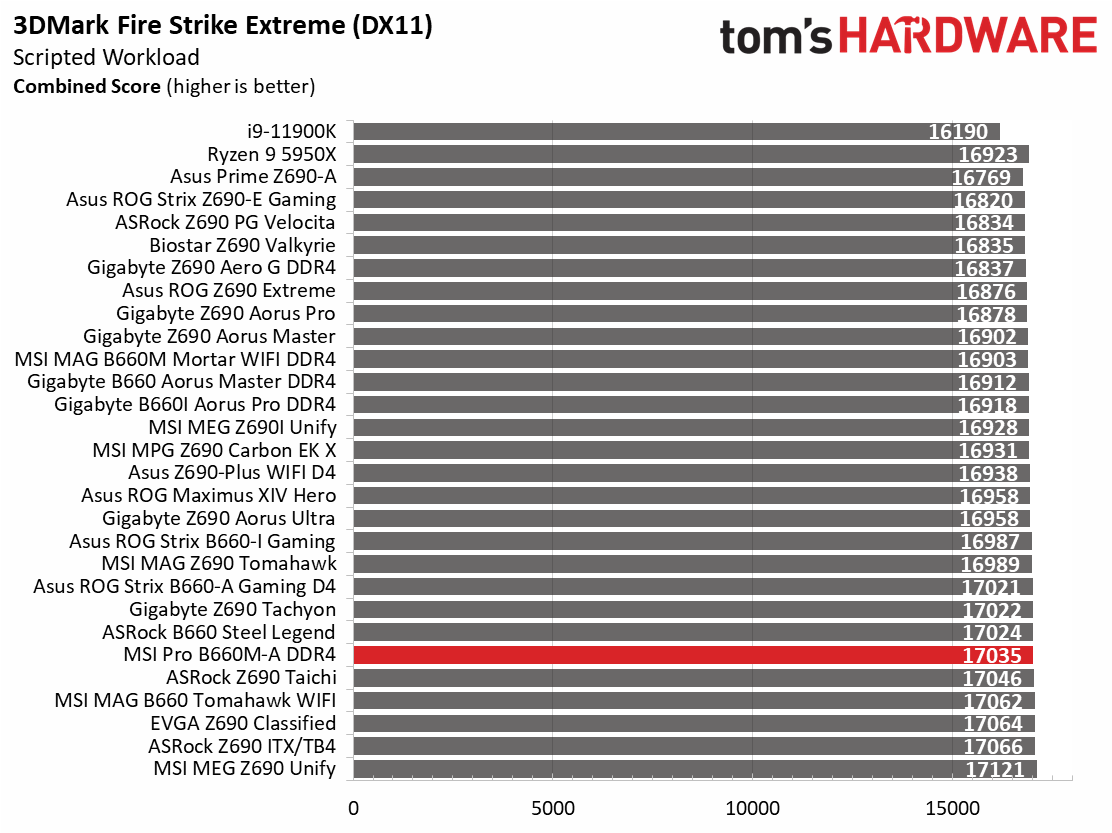
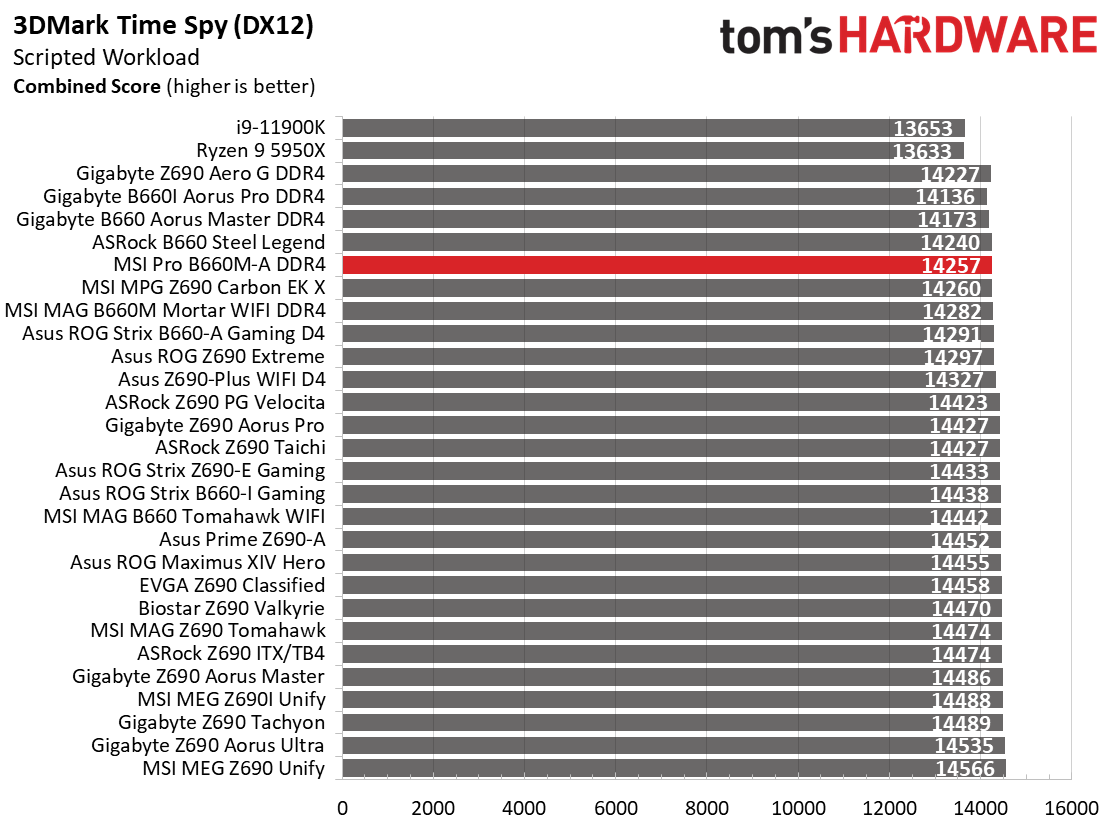
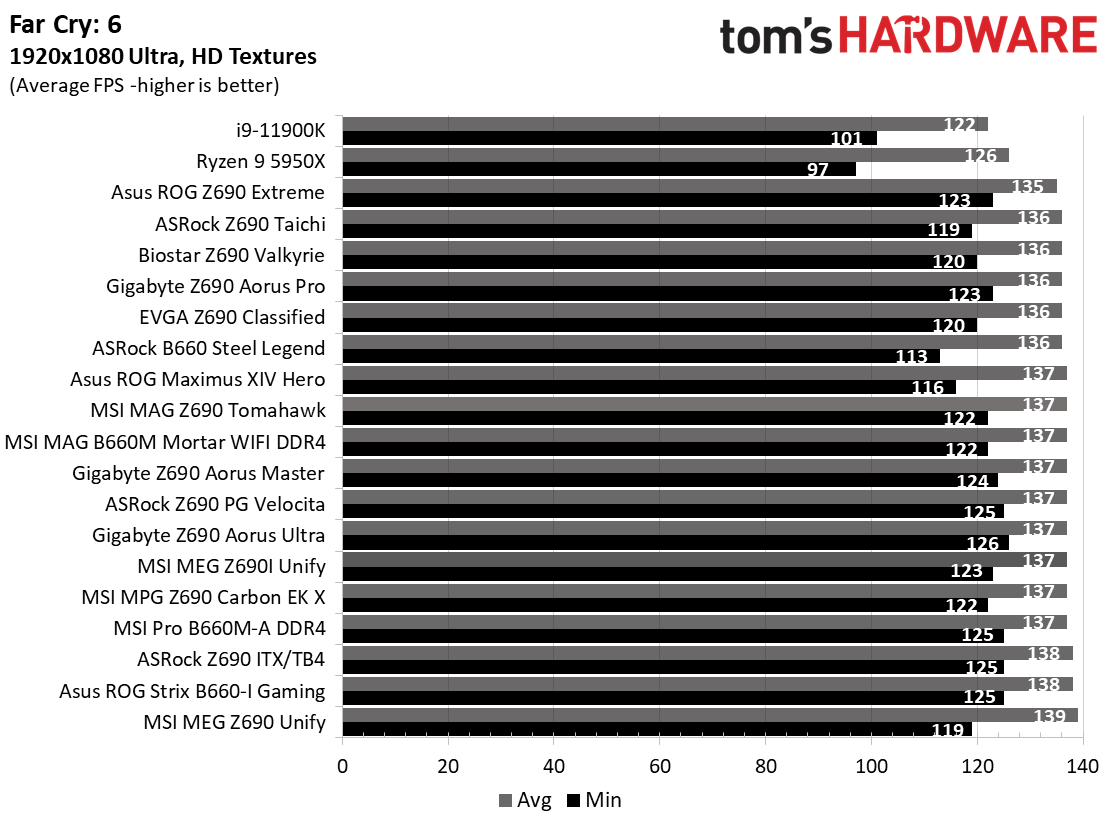
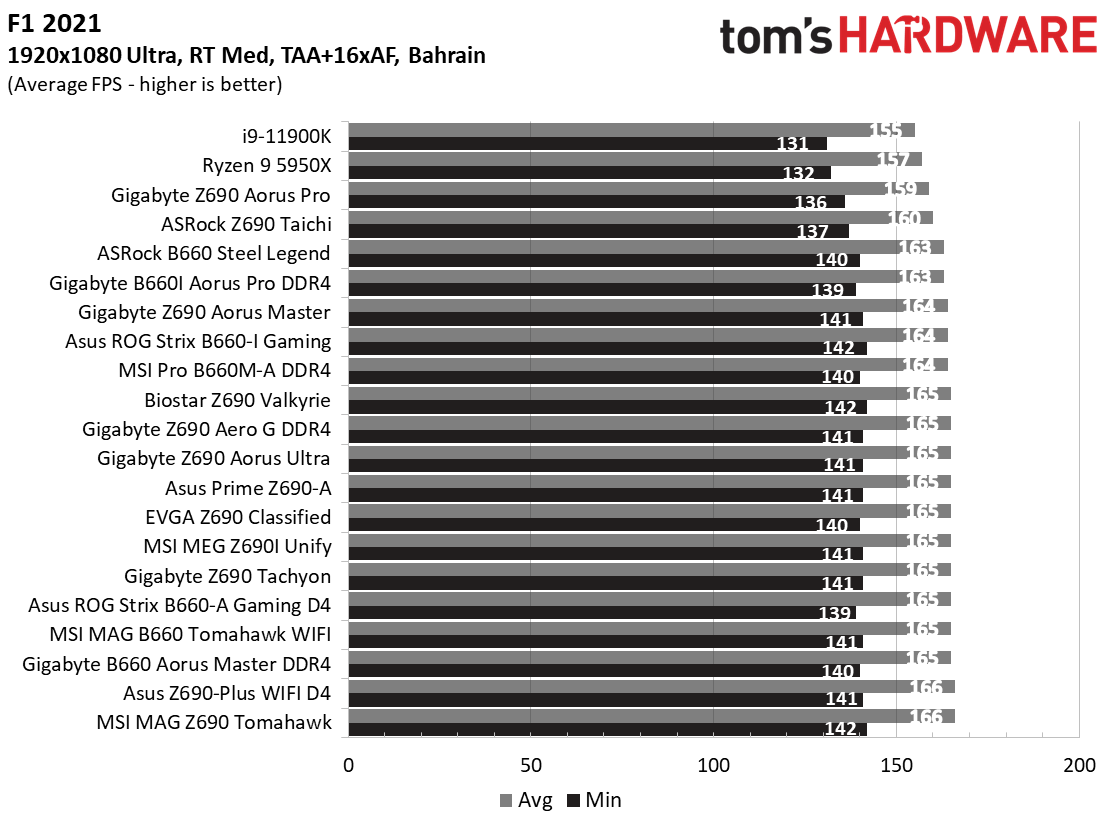
Starting with the launch of the Z690 chipset, we’ve updated our game tests, updating to Far Cry 6 and shifting from F1 2020 to F1 2021. We run the games at 1920x1080 resolution using the Ultra preset (details listed above). As the resolution goes up, the CPU tends to have less impact. The goal with these settings is to determine if there are differences in performance at the most commonly used resolution with settings most people use or at least strive for. We expect the difference between boards in these tests to be minor, with most falling within the margin of error differences. We’ve also added a minimum FPS value, as that can affect your gameplay and immersion experience.
In F1 2021, the B660M-A DDR4 averaged 164 frames per second (fps) with minimums of 140 fps, an average result. In Far Cry 6, the board averaged 137 fps, with a minimum of 125 fps, another average result.
Get Tom's Hardware's best news and in-depth reviews, straight to your inbox.
Our trend of not seeing significant differences among Z690/B660 boards continues in our synthetic benchmarks. The MSI scored 14,257 on 3DMark Time Spy and 17,035 on Fire Strike Extreme. All the results for games and gaming benchmarks are spot on.
Power Consumption / VRM Temperatures
We used AIDA64’s System Stability Test with Stress CPU, FPU and Cache enabled for power testing, using the peak power consumption value. The wattage reading is from the wall via a Kill-A-Watt meter to capture the entire PC minus the monitor. The only variable that changes is the motherboard; all other parts are the same.
At idle, the DDR4-based Pro consumed 55W, with load wattage peaking at 337 Watts. Both results are close to average and there’s nothing to worry about when it comes to power consumption.
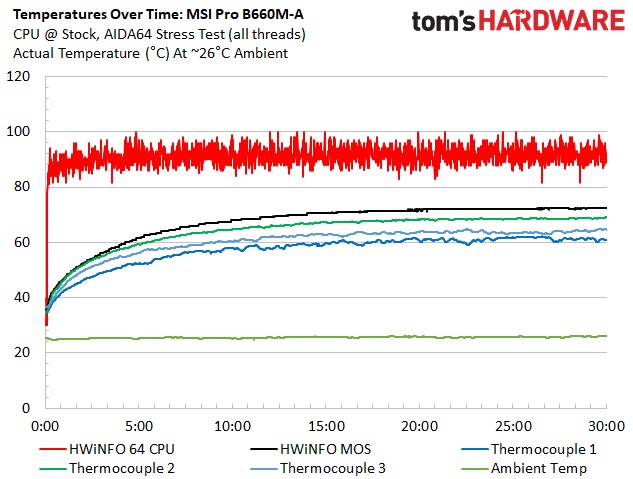
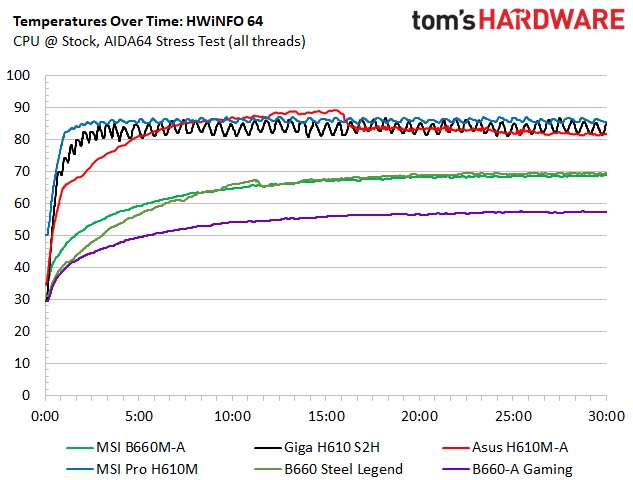
During stock stress testing, we saw thermal throttling due to the board’s liberal voltage use by default. The CPU thermally throttled almost immediately for this stress test load, which helped keep the VRM temperatures in check. The board peaked around 70 degrees Celsius on our sensors and around 73 degrees according to the internal temperature sensor. The VRM heatsinks kept the MOSFETs running within specification, though they run warmer compared to other, more powerful implementations.
Overclocking
Overclocking the CPU isn’t possible on B660-based chipsets, but the platform allows memory speed adjustment. With our DDR4-3600 and DDR4-4000 kits, we simply set XMP, and off we went without a hitch. Surely there’s some headroom left, but I’m not convinced spending an arm and a leg for higher-end DDR4 memory is worth it at this time. Stick with the sweet spot around DDR4 3600 with the low CL rating.
Bottom Line
MSI’s Pro B660M-A DDR4 hits the motherboard scene intending to satisfy any professional workflow by delivering “... an efficient and productive experience.” The board is generally well-equipped, including two M.2 sockets, four SATA ports, and a 2.5 GbE (this version does not include Wi-Fi, but you can add it with a CNVi-based Key-E M.2 card - or buy the Wi-Fi equiped model), and a dated budget audio codec. As far as looks go, the black board doesn’t command attention inside your chassis as it doesn’t include RGB LEDs, but it still looks OK. At this price point, you don’t get all of the shrouds and other accouterments, like integrated LEDs, that can make a board stand out and look better inside your case. But overall, it’s a capable starting point for a non-overclocking Alder Lake-based system.
Priced at $129.99 on Newegg and Amazon, the B660M-A DDR4 sits in the middle of comparable B660 DDR4-based Micro-ATX boards. The competition includes the ASRock B660M Steel Legend ($149.99), Gigabyte B660M DS3H AX DDR4 ($129.99), with Asus’ entry in this space the Pro B660M-C D4-CSM ($129.99). There are a couple of differences between these boards. First is integrated Wi-Fi, which only the Gigabyte has (there’s an MSI Pro B660M-A WIFI for $149.99). Next are integrated RGBs, which only the ASRock includes. Sure, the power delivery is different, but none of the boards overclock and each can handle an i9-12900K.
In this case, ASRock’s B660M Pro RS gets the nod for best among the sub-$140 B660 Micro-ATX group, but only because of the current price. If the MSI and Gigabyte cost the same, it’s a true ‘pick em’ coming down to subjective points like looks, RGBs, and Wi-Fi to sway your decision.
MORE: Best Motherboards
MORE: How To Choose A Motherboard
MORE: All Motherboard Content

Joe Shields is a staff writer at Tom’s Hardware. He reviews motherboards and PC components.
